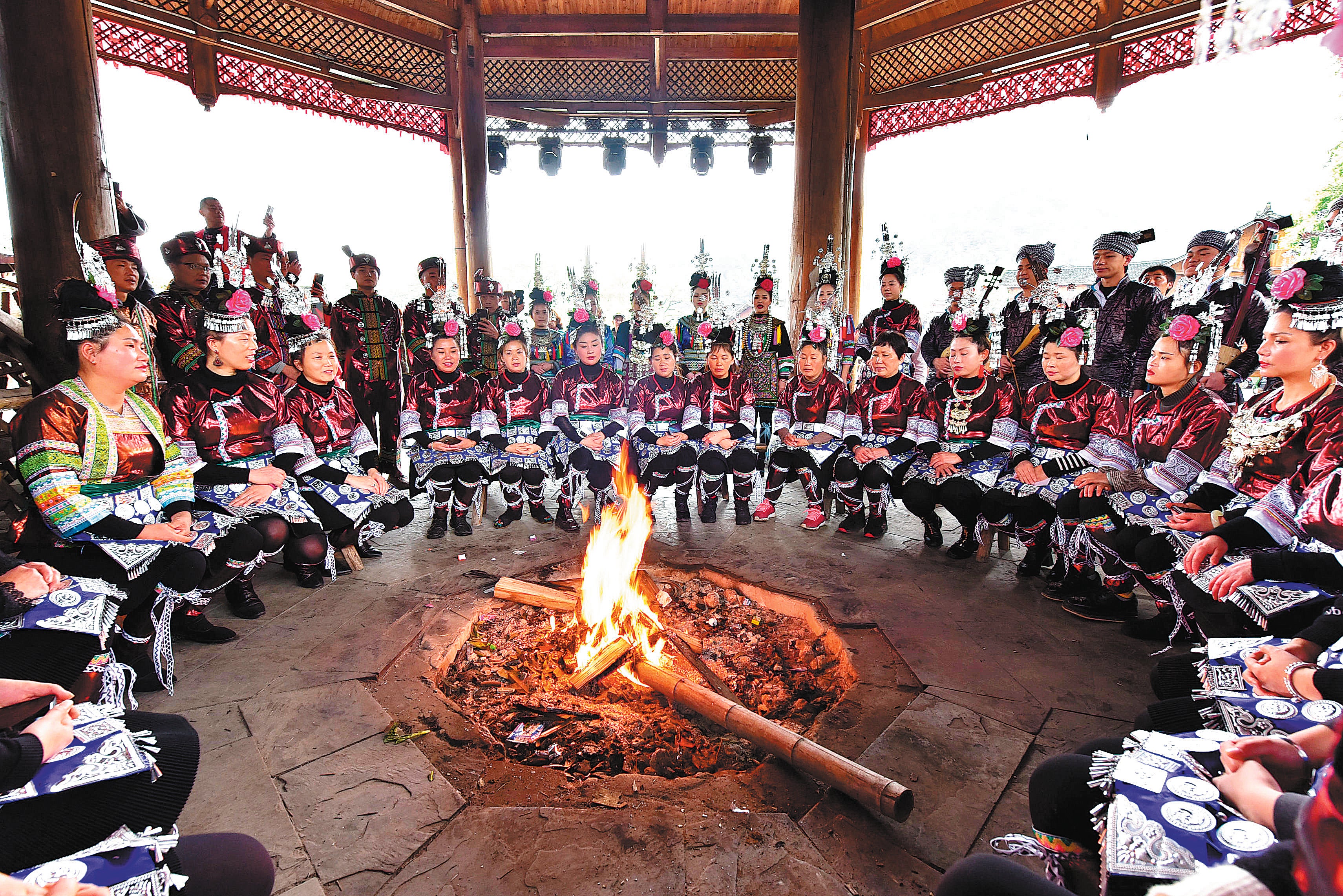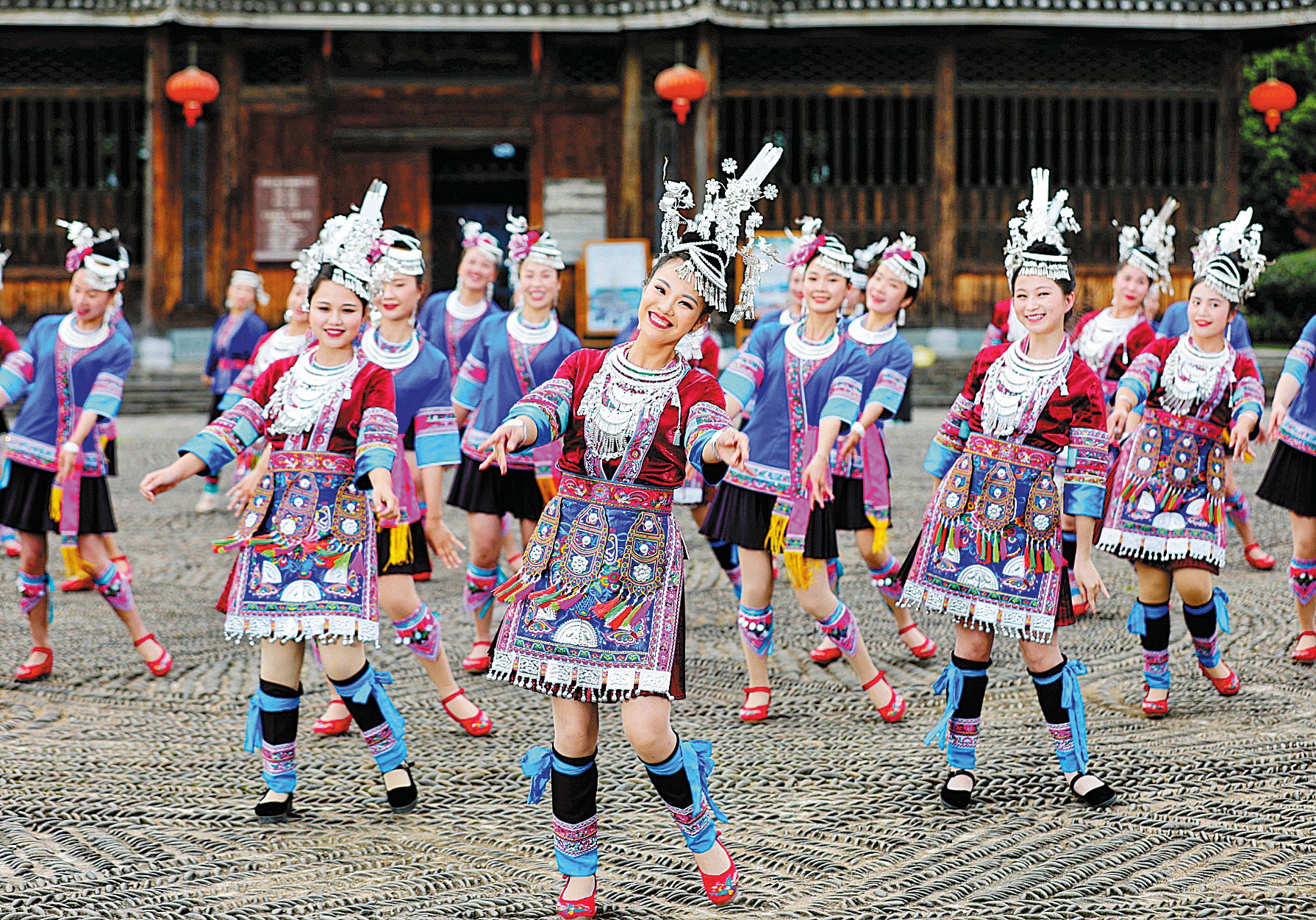Together in chorus
THE ARTICLES ON THESE PAGES ARE PRODUCED BY CHINA DAILY, WHICH TAKES SOLE RESPONSIBILITY FOR THE CONTENTS

When Wu Jinyan, a singer of the Dong ethnic group, stepped off the stage from one of her first overseas concerts she found it hard to mingle at the post-performance party.
“We couldn’t speak the language and didn’t really know what was going on. But people soon gathered around. They wanted to know more about us and our singing. We became closer through song.”
The experience two years ago in a multi-stop tour of the United States became a highlight for Wu and fellow practitioners of the Dong ethnic group’s traditional Grand Song, marking its increasing popularity at home and abroad.
Wu, 37, is a lead singer in Yandong, Liping county, Guizhou province. Her ethnic group is famous for Grand Song, the folk music – described as polyphonic and a cappella – of its members, with UNESCO recognising the practice as an intangible cultural heritage. The millennia-old tradition is said to derive from the sounds of nature and singers’ lives in their natural surroundings, such as the rush of rivers and the call of birds, with each group having as many as 1,000 singers.
Mu Qian, an ethnomusicologist and music curator, has studied the Dong songs closely and helped promote them worldwide. Mu travelled to the US with Wu’s six-member group, taking on the role of emcee to present the cultural backgrounds and meaning of the songs of the Dong people, also known as Kam.
“The sounds of nature have a special meaning to the Kam people and are reflected in many Kam songs,” Mu wrote in Folklife, the online magazine of the Smithsonian Center for Folklife and Cultural Heritage.
“For example, the chirping of cicadas is a constant backdrop in the Kam area, and the imitation of cicadas can be found in many songs. In During Daytime, I Go up the Mountain, a young woman hears the sound of cicadas; to her ears, it sounds like weeping,” said Mu, an editor at the non-profit organisation Répertoire International de Littérature Musicale in New York. “She sighs at the memory of an old lover.”

During a stop at the University of Michigan, “the group performed a full concert, but we also held workshops”, he said. “We did this wherever conditions allowed because workshops seemed the best way to introduce the natural and human environment of the Kam region and to teach the audience to sing.
“By working close up we could give people a deeper understanding of this musical culture so different from their own.”
In the Sanjiang Dong autonomous county of Liuzhou in the neighbouring Guangxi Zhuang autonomous region, a greater effort is also being made to preserve and promote the ethnic group’s song heritage.
Pan Ming, general manager of the Guangxi Tourism Development Group, which runs the major Sanjiang scenic area where the ethnic group’s Grand Songs are performed and promoted, said nearly 1 billion yuan (£114 million) has been invested in the county in recent years to help preserve and pass on the Dong intangible cultural heritage.
“Local ethnic aspects such as the Grand Song of the Dong are integrated with the cultural and tourism industry to improve the visitor experience, create immersive song and dance programmes, and enhance the attractiveness of Dong culture,” Pan said.
Ben Linde, a US ethnomusicologist and music teacher at Guangxi University for Nationalities, said he first experienced the Grand Song “through the studies, performances and cultural heritage transmission efforts” of Guangxi Arts University’s department of ethnic arts in Nanning.
The Grand Song is “unlike any other folk songs I’ve heard anywhere in the world,” he said.
“Its charming main melody floats over the harmony part, creating a delightful and gentle ‘rocking’ experience for the ear. Combined with the group nature of performance, often strikingly polished, this folk-music genre must be shared, protected and passed to future generations.”
As long as people from Sanjiang are supportive, fusions and new presentations of its Grand Song “are a great way to increase the spread and enjoyment of this great art form”, he said.
Previously published on Chinadaily.com.cn
